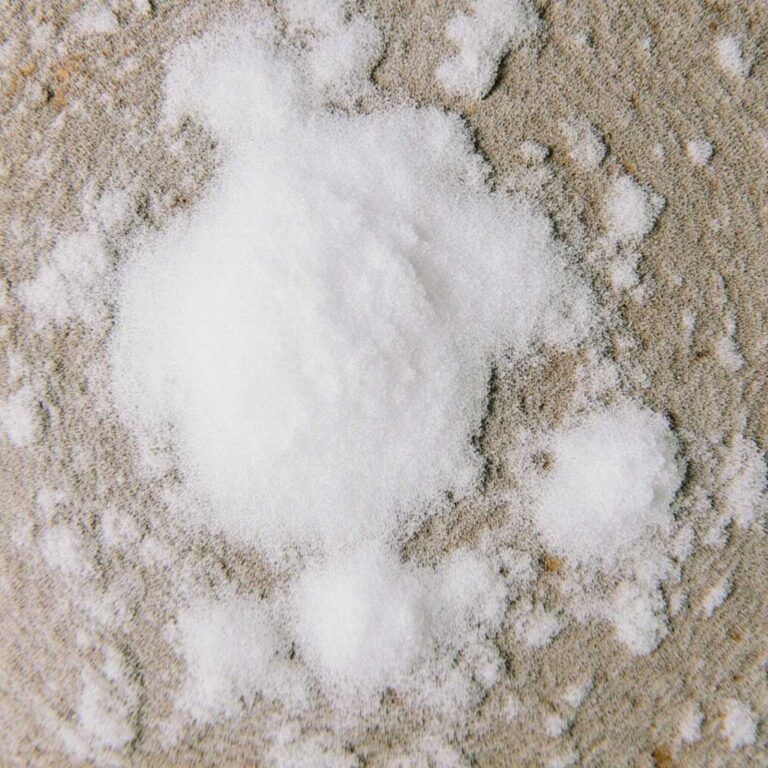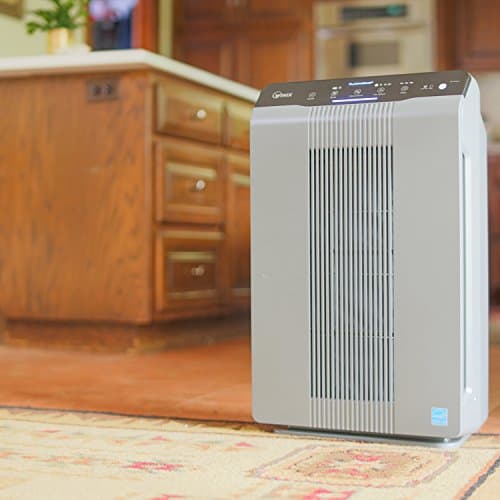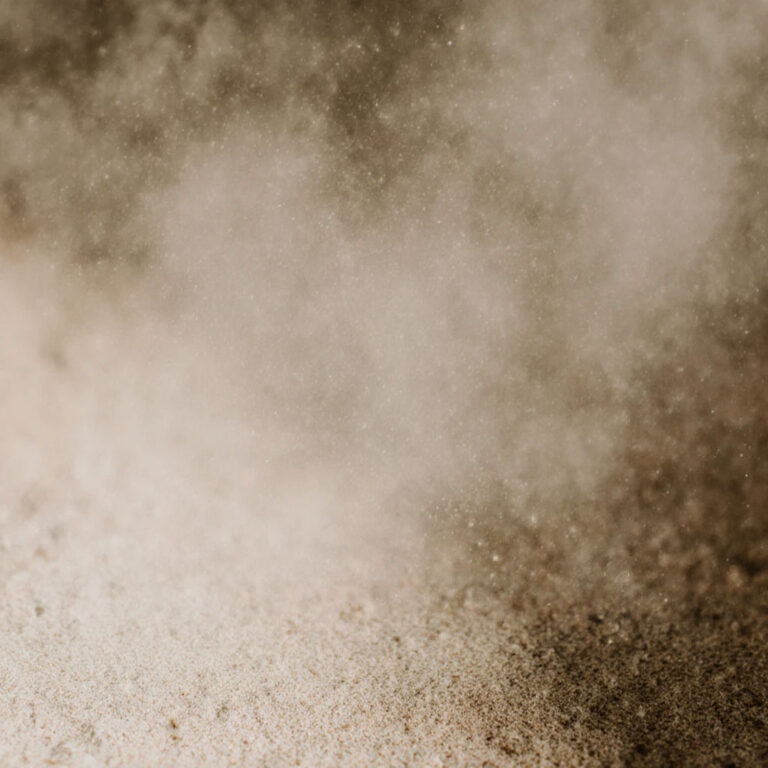
Persistent headaches, unexplained fatigue, or a lingering cough? These symptoms might not just be signs of a common cold or stress; they could be indicators of mold poisoning. Often lurking unseen in our homes, mold can release spores and mycotoxins into the air, leading to a range of health issues that many overlook.
According to the Centers for Disease Control and Prevention (CDC), exposure to mold can cause nasal stuffiness, throat irritation, coughing, wheezing, and skin irritation in sensitive individuals. For those with mold allergies or compromised immune systems, the effects can be more severe, potentially leading to chronic respiratory illnesses.
Understanding the symptoms of mold poisoning is crucial for early detection and prevention. In this article, we’ll explore the common signs of mold exposure, identify who is most at risk, and provide practical steps to minimize exposure and maintain a healthy living environment.
What Is Mold Poisoning?
Mold is a type of fungus that thrives in damp, humid environments. It reproduces by releasing microscopic spores into the air, which can settle on various surfaces and grow when conditions are favorable. Common indoor molds include Cladosporium, Penicillium, and Aspergillus, often found in areas with moisture issues such as bathrooms, basements, and kitchens.
Mold poisoning, also known as mold toxicity, occurs when an individual experiences adverse health effects due to prolonged exposure to mold spores and their byproducts, particularly mycotoxins. These toxic substances can lead to a range of symptoms affecting the respiratory, neurological, and immune systems.
Concierge MD – Mobile Medical Services
Black Mold vs. Other Molds
Among the various types of mold, black mold (Stachybotrys chartarum) is often highlighted due to its potential health risks. This mold is dark green or black and typically grows on materials with high cellulose content, such as wood, drywall, and paper. Black mold produces mycotoxins that can be harmful when inhaled, especially for individuals with allergies, asthma, or compromised immune systems.
While black mold is notorious, other molds like Cladosporium and Aspergillus can also pose health risks. These molds are commonly found indoors and can trigger allergic reactions and respiratory issues, particularly in sensitive individuals.
Understanding the presence and types of mold in your environment is crucial for maintaining good health. Regular inspections and prompt remediation of moisture issues can help prevent mold growth and reduce the risk of mold poisoning.
Common Symptoms of Mold Poisoning
Exposure to indoor mold spores and their toxic byproducts, known as mycotoxins, can lead to a wide array of health issues. These symptoms often vary based on the duration of exposure, the individual’s sensitivity, and the specific type of mold present. Below, we categorize the common symptoms associated with mold poisoning to aid in early recognition and intervention.
Physical Symptoms
Physical manifestations are often the first indicators of mold exposure. These symptoms can resemble common allergic reactions but may persist or worsen over time.
- Coughing and Wheezing: Persistent cough and wheezing are common, especially in individuals with asthma or other respiratory conditions.
- Headaches: Frequent headaches may occur due to the body’s inflammatory response to mold spores.
- Skin Rashes: Exposure can lead to skin irritation, including rashes and hives, particularly in sensitive individuals.
- Nasal Congestion and Sneezing: These are typical allergic responses to inhaled mold spores.
Cognitive Symptoms
Beyond physical ailments, mold exposure can impact cognitive functions, leading to neurological symptoms that are often overlooked.
- Brain Fog: A sensation of mental cloudiness, difficulty concentrating, and forgetfulness are reported by individuals exposed to mold.
- Memory Issues: Short-term memory problems can arise due to the neurotoxic effects of certain mycotoxins.
- Mood Swings and Depression: Emotional instability, including mood swings and depressive symptoms, have been linked to prolonged mold exposure.
Long-Term Effects
Chronic exposure to mold can lead to more severe health complications, some of which may become permanent if not addressed promptly.
- Respiratory Issues: Long-term exposure can exacerbate asthma, lead to chronic bronchitis, or cause other persistent respiratory conditions.
- Chronic Fatigue Syndrome: A debilitating condition characterized by extreme fatigue that doesn’t improve with rest, potentially linked to ongoing mold exposure.
- Immune Suppression: Mold toxins can weaken the immune system, making individuals more susceptible to infections and slowing recovery from illnesses.
Recognizing these symptoms early and seeking appropriate medical and environmental interventions is crucial to prevent long-term health consequences.
Who’s Most At Risk?
While mold exposure can affect anyone, certain groups are more susceptible to its adverse health effects due to age, existing health conditions, or compromised immune systems.
Children
Children’s developing respiratory systems and immune defenses make them particularly vulnerable to mold exposure. Studies have shown that exposure to indoor mold can increase the risk of developing asthma and allergic rhinitis in children.
Seniors
Older adults may have weakened immune systems and pre-existing respiratory conditions, making them more susceptible to mold-related health issues. Exposure to indoor mold has been associated with an increased risk of asthma in older adults.
Immunocompromised Individuals
People with weakened immune systems, such as those undergoing chemotherapy, organ transplant recipients, or individuals with HIV/AIDS, are at higher risk for invasive mold infections. These infections can be severe and potentially life-threatening.
People with Asthma or Allergies
Individuals with asthma or mold allergies may experience more severe reactions upon exposure to mold, including asthma attacks and heightened allergic responses. Mold exposure can exacerbate asthma symptoms and lead to increased respiratory issues.
How Mold Poisoning Is Diagnosed
Identifying mold poisoning involves a combination of medical evaluations and environmental assessments to determine exposure levels and associated health effects.
Medical Tests
Healthcare providers may utilize several tests to assess mold exposure:
- Blood Tests (IgE Levels): Measure the immune system’s response to mold by detecting specific antibodies.
- Urine Mycotoxin Tests: Detect the presence of mycotoxins, toxic substances produced by certain molds, in the body.
- Inflammatory Marker Tests: Assess levels of inflammation-related substances in the body, which can indicate mold-related health issues.
Home Mold Testing Kits
At-home mold testing kits can help identify the presence of mold in your environment. These kits typically involve collecting air or surface samples and sending them to a laboratory for analysis. While useful for preliminary assessments, professional evaluation is recommended for comprehensive analysis.
Doctor’s Assessment
A thorough medical evaluation by a healthcare professional is crucial. This includes reviewing symptoms, medical history, and potential exposure sources. Doctors may also recommend further testing or refer patients to specialists for comprehensive care.
Can Mold Poisoning Be Diagnosed?
Yes, mold poisoning can be diagnosed through a combination of medical tests, environmental assessments, and clinical evaluations. Accurate diagnosis is essential for effective treatment and prevention of further exposure.
How to Avoid Mold Poisoning
Preventing mold poisoning involves proactive measures to control moisture and improve indoor air quality. Implementing the following strategies can help reduce the risk of mold growth and exposure.
Prevention Tips
- Ventilation and Dehumidifiers: Ensure proper ventilation in areas prone to moisture, such as bathrooms and kitchens. Use exhaust fans or open windows to reduce humidity. Dehumidifiers can help maintain indoor humidity levels between 30% and 50%, which is ideal for preventing mold growth.
- Fixing Leaks Promptly: Address any water leaks or spills immediately. Moisture from leaks can lead to mold growth within 24 to 48 hours.
- Cleaning Visible Mold with Proper Gear: When cleaning mold, wear protective gear such as gloves, goggles, and an N-95 respirator. Use detergent and water to scrub mold off hard surfaces, and dry the area completely.
Mold-Proofing Your Home
- Mold-Resistant Paint: Apply mold-resistant paints in areas with high humidity, like bathrooms and basements, to inhibit mold growth.
- Air Purifiers with HEPA Filters: Use air purifiers equipped with True HEPA filters to capture mold spores from the air, improving indoor air quality.
- Professional Mold Inspections: Consider hiring professionals for mold inspections, especially if you suspect hidden mold or have experienced water damage.
What to Do If You Suspect Exposure
If you believe you’ve been exposed to mold, taking prompt action can mitigate health risks and prevent further exposure.
- See a Doctor: Consult a healthcare provider if you experience symptoms like persistent coughing, headaches, or skin rashes. Inform them about potential mold exposure so they can conduct appropriate tests and evaluations.
- Detox Tips (Natural and Medical):
- Natural Approaches: Support your body’s detoxification by staying hydrated, consuming a nutrient-rich diet, and engaging in regular exercise to promote sweating.
- Medical Treatments: Your doctor may recommend medications like antihistamines or nasal sprays to alleviate allergic reactions. In some cases, they might suggest binders to help remove mycotoxins from the body.
- When to Call a Mold Remediation Expert: If you identify significant mold growth in your home or if mold returns after cleaning, it’s advisable to contact a certified mold remediation specialist. They can assess the situation and implement effective removal strategies to ensure your home is safe.
FAQs About Mold Poisoning
To provide further clarity on mold poisoning, here are answers to some frequently asked questions:
Can Mold Poisoning Be Cured?
While there’s no definitive “cure” for mold poisoning, symptoms can often be managed and alleviated through a combination of medical treatments and environmental interventions. Addressing the source of mold exposure and seeking appropriate medical care are crucial steps in the recovery process.
Is Mold Poisoning Fatal?
Mold poisoning is rarely fatal for healthy individuals. However, those with compromised immune systems or pre-existing respiratory conditions may face more severe health risks. In such cases, mold exposure can lead to serious complications, including invasive infections.
How Long Does It Take to Recover?
Recovery time from mold poisoning varies depending on factors like the duration of exposure and individual health conditions. Some individuals may experience improvement within days of removing the mold source, while others may require weeks or months for full recovery.
Final Thoughts
Mold poisoning is a significant health concern that can manifest through a range of symptoms, from respiratory issues to cognitive impairments. Understanding the risks and recognizing the signs are the first steps toward safeguarding your health.
Prevention is paramount. Maintaining proper ventilation, controlling indoor humidity, promptly addressing leaks, and conducting regular inspections can significantly reduce the risk of mold growth in your home.
If you suspect mold poisoning, don’t wait. Take control of your environment and your health.












